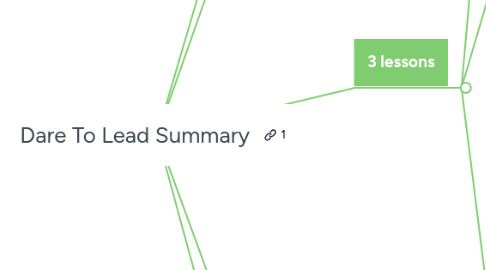
1. 1-Sentence-Summary:
1.1. Dare To Lead dispels common myths about modern-day workplace culture and shows you that true leadership requires nothing but vulnerability, values, trust, and resilience.
2. Favorite quote from the author:
2.1. "The courage to be vulnerable is not about winning or losing, it's about the courage to show up when you can't predict or control the outcome." ― Brené Brown
3. 3 lessons
3.1. Courage and vulnerability always go together.
3.1.1. Vulnerability is “the universal emotion we feel when times are risky and uncertain or we are at the mercy of other people’s actions.” Given that definition, it's impossible to do something that requires courage that doesn’t also require you to be vulnerable.
3.1.2. The truth is whenever we choose courage, we also choose vulnerability. Because that’s precisely what courage is about: acting in spite of fear, uncertainty, and potential danger. That’s why Brené is so adamant that vulnerability is not a sign of weakness.
3.2. If you can narrow your core values down to just two, you can navigate even the toughest of times.
3.2.1. People who know what their values are have an easier time dealing with adversity. They can let their values guide them.
3.2.2. If you really want your values to guide you well, focus on only two of them.
3.2.2.1. Prioritizing two values above all others gives you a specific ideal to turn to when the going gets tough.
3.2.2.2. It’s easy to compile 15 great values, but when you tell yourself all of them matter, you’ll end up prioritizing none of them.
3.3. The seven behaviors that create trust can be summed up with the acronym BRAVING.
3.3.1. Boundary-setting. Clarifying and respecting each other’s limits is crucial to a collaborative relation.
3.3.2. Reliability. If we can’t rely on another to keep our word, what good is it?
3.3.3. Accountability. Making mistakes is normal. Sweeping them under the rug isn’t.
3.3.4. Vault-closing. Trust is a safeguard for information. If you don’t break my confidentiality, I won’t break yours.
3.3.5. Integrity. Whatever your core two values are, never compromise them.
3.3.6. Non-judgement. When you replace judgment with curiosity, you turn isolation into connection.
3.3.7. Generosity. Leave lots of room in your interpretations and expectations. This way, others will always turn to you.
